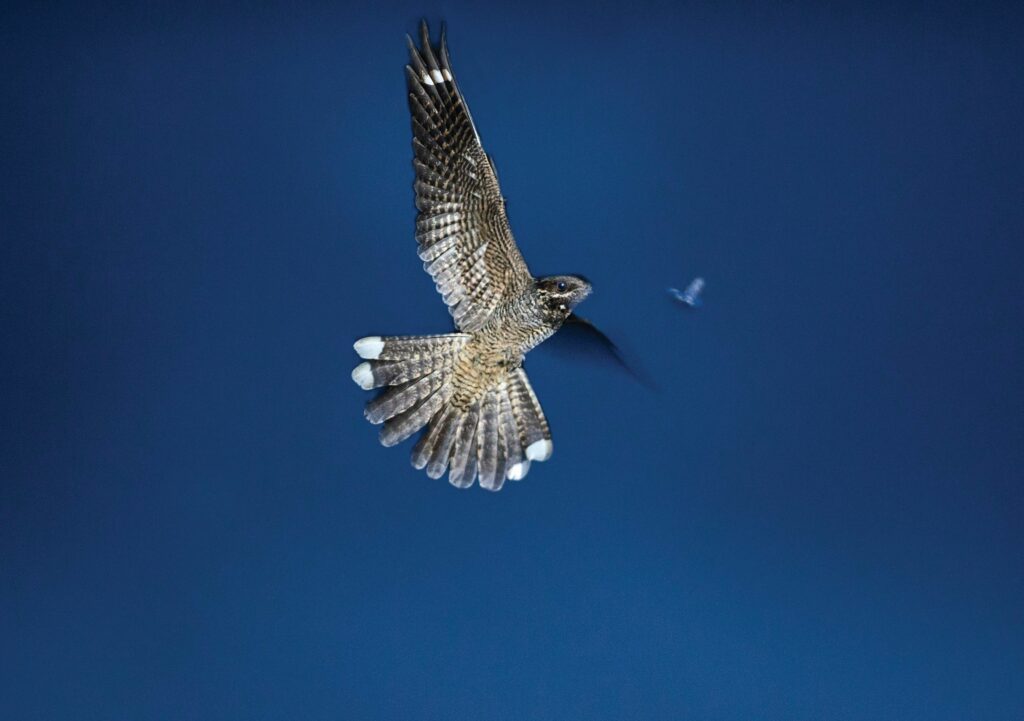TALES FROM THE BUSH
Into the woods
A band of young naturalists seek out a mysterious migrant

Nightjars are creatures of darkness, elusive and slightly spooky. Some European countries still refer to them as goatsuckers because they are often found near livestock and were once believed to use their wide mouths to milk goats. Such folklore made me long to see one myself.
It was the final weekend of July when I drove to the New Forest and turned onto a long gravel track that eventually entered the treeline through a gap like a mouse hole. The world got darker. Raised banks on either side were covered with untrampled ferns interrupted by outcrops of limestone painted with yellow lichen, and beyond were endless rows of moss-clung trunks. The track wound down to reveal a cottage framed by forest and set at the heart of Franchises Lodge nature reserve. Every bodily sense pointed to one exhilarating thought: not many people have been here…
At the cottage were six other young naturalists and together – with binoculars hanging around our necks – we were soon spotting colourful crossbills, spotted flycatchers and a companionable firecrest that followed us like a bright orange ball of wool atop two pine-needle legs, threading itself through the conifer branches. Each night, just as the sun dipped below the wooded horizon, we went on nightjar walks.
With torches switched off, we let our eyes adapt to the dark, all raring to catch a silhouetted glimpse of this fleeting summer migrant, which only visits the UK for a few weeks each year. After two unsuccessful walks, we began to lose hope. On the final night we had arranged instead to go mothing in a clearing. A small generator hummed away, powering a luminescent light which lit the moth traps as well as our tired faces.
All thoughts were on the array of species being attracted by the irresistible white glow, until we heard it: a monotonous series of hollow ‘chonk, chonk, chonk’ sounds coming from the towering Scots pines behind us. Everyone looked skyward as two nightjars zipped across the skyline, backlit by the moon and taking insects on the wing. We returned to the cottage in the small hours, intoxicated by this magical moment. Is this proof that a watched pot never boils? The minute we stopped looking for nightjars, there they were.

ABOUT THE AUTHOR
Andrew Millham is a nature writer, forest school leader and Essex Wildlife Trust ambassador. His debut book, Singing Like Larks, is due to be published in March by Saraband.
Have a wild tale to tell? Email a brief synopsis to catherine.smalley@ourmedia.co.uk